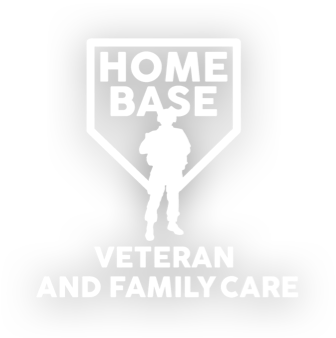Mental Health: The History of PTSD
The History of PTSD in the Military
By Danielle Leahy, Administrative Coordinator at Home Base
June is National Post-Traumatic Stress Disorder Awareness Month. It also marks the 77th anniversary of D-Day, a day that altered the course of history forever. With the continuing passage of time, and as we continue to lose our WWII veterans, it is important to reflect on their sacrifices and to also better understand the evolution of PTSD treatment, or lack thereof, within the military across generations.
PTSD is an increasingly common diagnosis within the military community, largely because of current medical research, increasing resources and treatment modalities, and the evolution of mental health stigma within society. However, PTSD is a relatively new medical diagnosis, as it was not formally recognized by the American Psychiatry Association until 1980 (Friedman, 2019). Because of this, the understanding, acceptance, and treatment of PTSD symptoms has evolved within the military from generation to generation.
During WWI, modern-day PTSD symptoms were referred to as “shell shock”, believed to have been the result of exposure to combat and the explosion of shells on the battlefield (Blakemore, 2020). With this, medical professionals believed the symptoms would resolve shortly upon returning home. This, however, was not the case. In order to attempt to understand the psychological toll veterans were facing, many researchers attempted to find a clear cause, mainly believing that psychological symptoms were the result of brain injury from combat rather than considering the mental impacts of war (McDonald et al, 2017). When this theory did not prove to be sound, other researchers suggested that perhaps numerous WWI veterans were predisposed to mental health symptoms such as anxiety, depression, lack of sleep, etc. (McDonald et al, 2017). This argument unfortunately placed a negative stigma on mental health, suggesting that many WWI veterans were “weak” and ignoring the trauma they endured. Such beliefs only further instilled negative stigmas on mental health, preventing thousands of Americans from seeking the treatment they deserved.
As WWII began, PTSD symptoms shifted from being referred to as “shell shock” to “combat stress reaction”, “battle fatigue”, and “combat fatigue” (Blakemore, 2020). The understanding of these symptoms began to be seen in a more empathetic light, but most WWII veterans did not come forward about symptoms they were experiencing. Cultural norms of the time promoted and even expected a male attitude in which men were “masculine”, strong, and resilient. In order to fit into this mold, most male veterans avoided speaking about their traumas in fear of appearing weak or “crazy”. Likewise, WWII veterans were celebrated upon their return home as the American public viewed the war as a victorious one, one that unified the country behind a common cause. This only reinforced many veterans’ desires to remain quiet about their struggles, due to survivor’s guilt and the pressure to reintegrate seamlessly back into society. The narrative of the generation was even described as being “..relentlessly upbeat..”, making it extremely difficult for anyone to admit to any inner distress or turmoil (Mulvey, 2019). So, many WWII veterans went back to work, started families, and didn’t speak of the war.
Because of this tendency of WWII vets to suffer in silence, there is a possibility of intergenerational trauma to have occurred (Madigan, 2015). Military service is a dedication of an entire family system and impacts more than just the service member. Likewise, children tend to learn and repeat behaviors they see in their parents or caregivers. The child of a WWII vet may have witnessed destructive behaviors or realize that their parents did not speak about their experiences or emotions, potentially leading the child to internalize this and carry this behavior into his or her own adulthood. PTSD affects entire family systems, and leaving it untreated may cause long-lasting trauma across generations.
Even after The American Psychiatry Association formally introduced PTSD as a diagnosis in 1980, it still took several years for treatment modalities to be developed and utilized, while many struggled with the stigma surrounding mental health. As our access to medical research and continuing conversations within society evolve, more veterans, service members, and family members are able to access quality care and therefore are able to take their lives back. At Home Base, our mission is to continue to learn, educate, and treat the invisible wounds of war and to ultimately better serve those who have served us.
If you or a loved one is struggling, you are not alone. If you would like to speak with one of our clinicians, please call our clinic at 617-724-5202.
References
Blakemore, E. (2021, May 3). How PTSD went from ‘shell-shock’ to a recognized medical diagnosis. History. https://www.nationalgeographic.com/history/article/ptsd-shell-shock-to-recognized-medical-diagnosis.
Friedman, M. J. (2019, October 14). PTSD History and Overview. VA.gov. https://www.ptsd.va.gov/professional/treat/essentials/history_ptsd.asp#:~:text=In%201980%2C%20the%20American%20Psychiatric,in%20psychiatric%20theory%20and%20practice.
Madigan, T. (2015, September 11). Their war ended 70 years ago. Their trauma didn’t. The Washington Post. https://www.washingtonpost.com/opinions/the-greatest-generations-forgotten-trauma/2015/09/11/8978d3b0-46b0-11e5-8ab4-c73967a143d3_story.html.
McDonald, M., Brandt, M., & Bluhm R. (2021, January 25). From shell-shock to PTSD, a century of invisible war trauma. The Conversation. https://theconversation.com/from-shell-shock-to-ptsd-a-century-of-invisible-war-trauma-74911.
Mulvey, S. (2019, June 7). The long echo of WW2 trauma. BBC News. https://www.bbc.com/news/stories-48528841.


 Home Base
Home Base